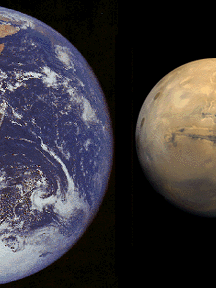This image shows the Earth and Mars
NASA
A Look at the History of Mars
This is probably what happened to Mars:
- an early warm period
- the inside of Mars cools off very fast
- volcanoes appeared, and the Tharsis Bulge is created
- there are changes in climate every once and awhile, which affect the way in which the frozen water of Mars comes to the surface.
The reason that the history of Mars is this way has to do with the fact that Mars is small, and the fact that Mars is farther from the sun that either the Earth or Venus. Some scientists call this the "Goldilocks" phenomenon.
You might also be interested in:
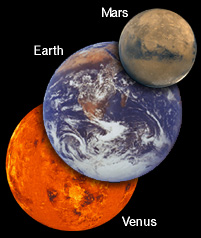
Just as Goldilocks found the porridge that was just right, the Earth seems to be just right for living creatures. The Earth seems to be the perfect distance from the sun for lots of water. Venus is too
...more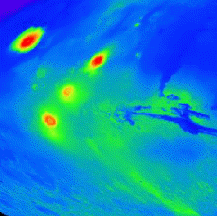
On this map of Mars, the lightly cratered Tharsis Ridge is shown, as well as the heavily cratered Martian highlands (near the bottom of the picture), and Valles Marineris to the right. The volcanoes are
...more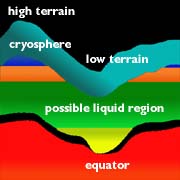
On Mars, the water is trapped, frozen, within the ground. Nevertheless, there is evidence for running water on Mars. When the water is melted and released to the surface, it will run from higher ground
...more
The drawing shows the depth at which water may be frozen into the ground. To have water running on the surface of Mars, this water region must be near to the surface. This may have happened at various
...more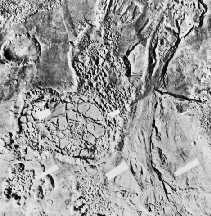
Separate from the Martian outflow channels, or the river valleys, are large Martian lakes (600 km, or ~1000 miles across) which once were part of a flood.
...more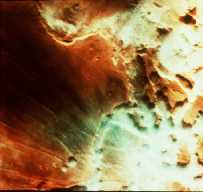
This picture shows fog on Mars. More fog has been seen in images returned by Mars Global Surveyor of the south polar region of Mars. Martian fog may have a little bit of acid mixed in with the water drops.
...more
The orbit of Mars is very oval shaped. The orbit is much more oval shaped than the Earth's orbit. This means that the climate of Mars can change drastically between warm and cold.
...more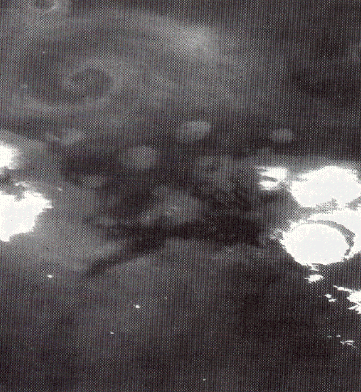
This is an image of a storm moving across the Martian land. The camera is looking down on the storm, the same way storms are presented on the news. The storm provides evidence that there is water on Mars.
...more
